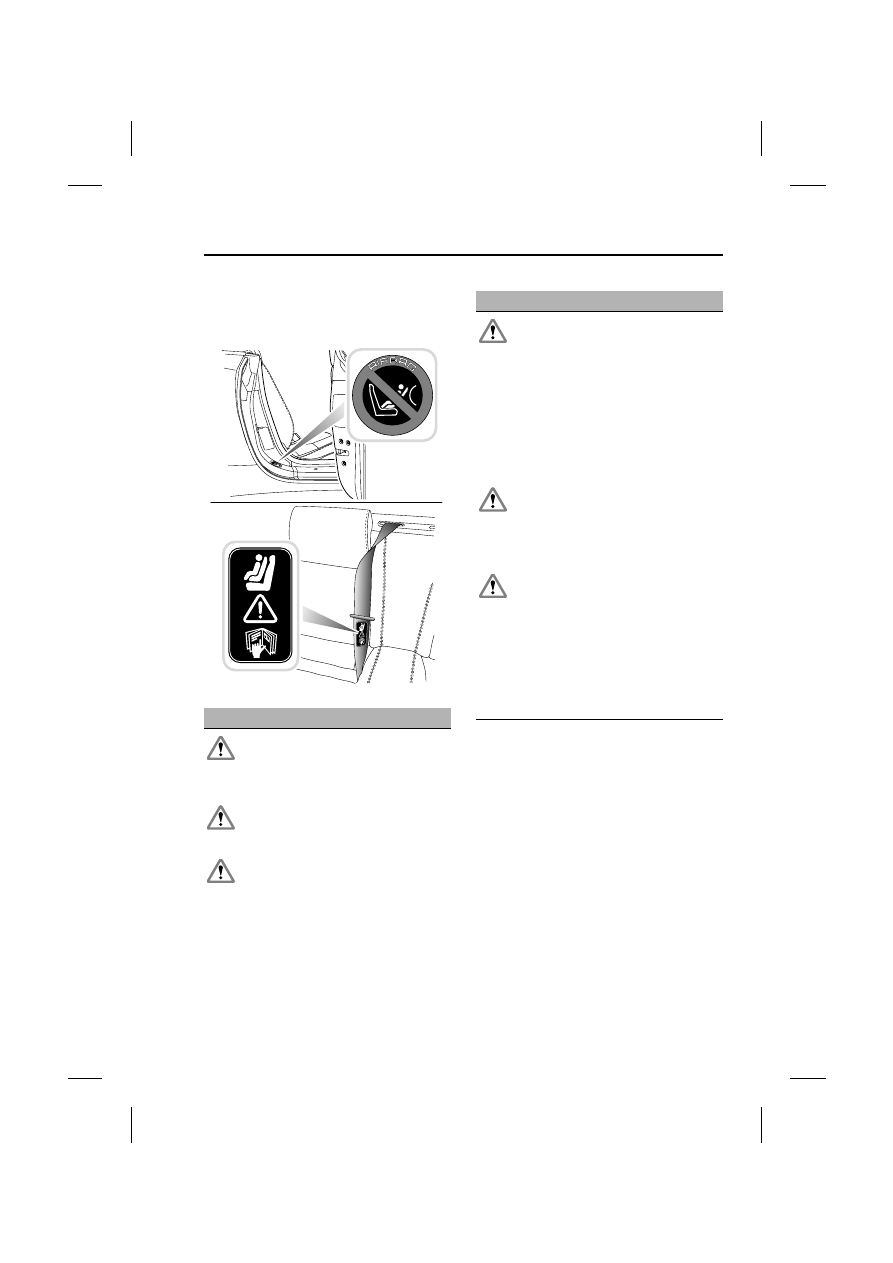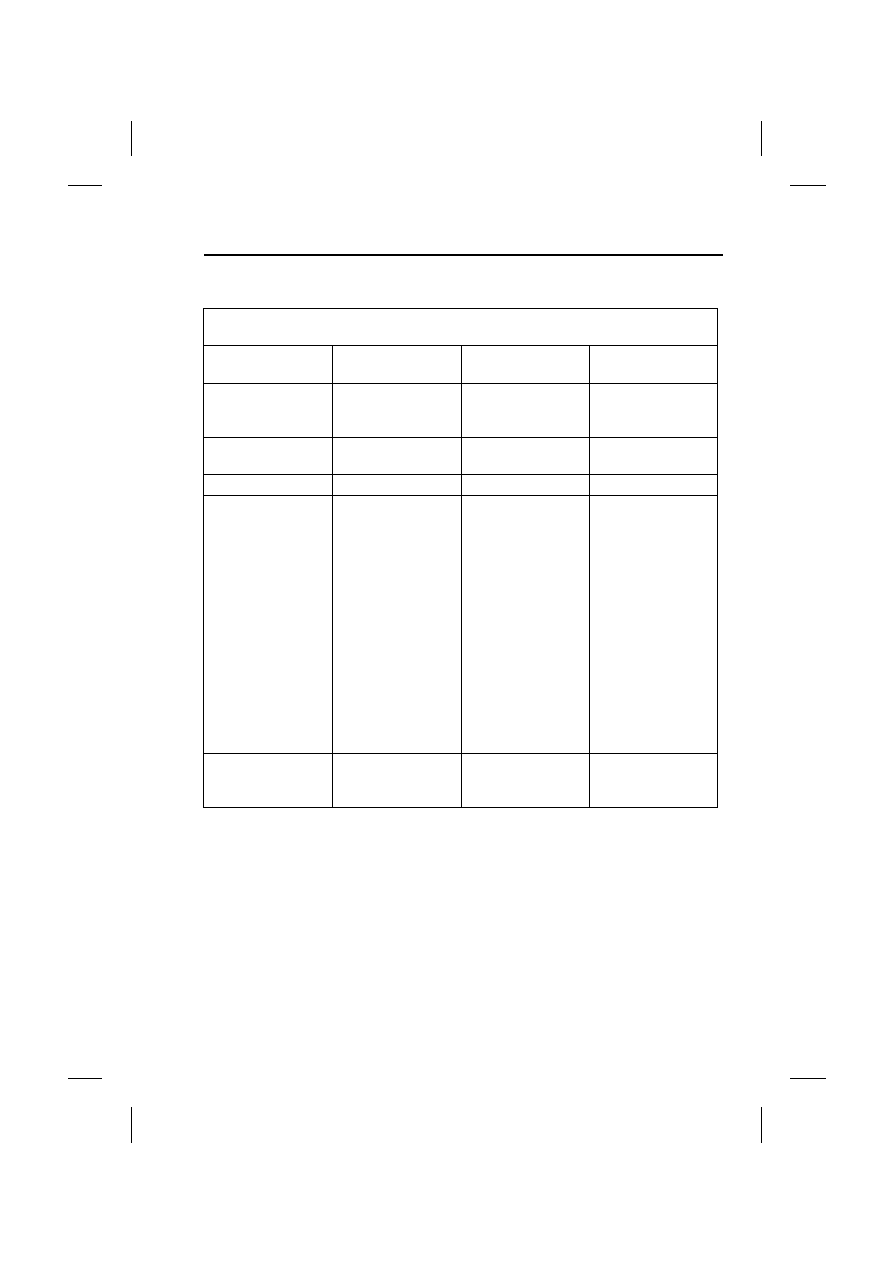Jaguar XK. Manual — part 17

71
Child safety
R
Child safety
CHILD SEATS
General safety information
In many countries legislation governs
how and where children should be
carried when travelling in a vehicle.
It is the responsibility of the driver to
comply with all regulations in force in the
country where the vehicle is being used.
Holding a baby or child in a person’s
arms is not a substitute for a child
restraint system.
In an accident, a baby or child held in this
manner can be crushed between the
vehicle’s interior and a restrained person.
WARNINGS
Extreme hazard! Do not use a
rearward facing child restraint on
a seat protected by an air bag in
front of it!
Children must be restrained by a
child safety restraint that is
suitable for their weight and size.
The rear seat is the safest place
for properly restrained children.
E91074
Do not install a rearward-facing
child seat in the front passenger
seat position since deployment of
the passenger facia air bag could cause
death or serious injury to the child. If,
however, you have no alternative but to
place a child in the front passenger seat,
use only a forward-facing child seat with
the passenger seat set fully rearward and
in its lowest position.
Children 12 years old and younger
can be killed or seriously injured
by the air bag. The rear seat is the
safest place for properly restrained
children.
Always follow the fitting
instructions supplied with the
appropriate child restraint system.
It is important to read and understand all
the information contained in this
handbook relating to child safety before
carrying a child in your vehicle. If you are
unsure about any aspect of this
information, contact your Jaguar Dealer.
WARNINGS

Child safety
72
L
The child can be injured by hitting the
interior or by being thrown from the
vehicle during a sudden manoeuvre or
impact.
The seat belts fitted to your vehicle are
designed for adults and larger children.
For their safety, it is very important that all
infants and children under 12 years of
age are restrained in a suitable child
safety seat appropriate to their age and
size. See CHILD SEAT POSITIONING
(page 73).
Choosing a suitable child seat
Before you buy a child seat, it is
important to note that your child’s weight,
rather than age, determines the type of
seat that is required.
Jaguar strongly recommends the use
of LATCH seats.
Jaguar recommends that a rear-facing
seat with a harness is used for as long
as your infant’s development allows.
Do not use a forward-facing seat until
your child is above the minimum weight
of 9 kg (20 lb) and able to sit up unaided.
Up to the age of two, a child’s spine and
neck are not sufficiently developed to
avoid injury in a frontal impact.
We strongly advise that you do not buy or
use a second-hand child seat. The seat
may have been used inappropriately, or
involved in an accident. In such
circumstances, the seat may not protect
your child.
Always check that the child seat can be
mounted securely in the required
position: if in doubt, you should speak to
your Jaguar Dealer.
Look for the following when selecting a
child restraint system:
• It should have a label certifying that it
meets the applicable regulations.
• Carefully read the instructions
supplied with the restraint. Be sure
you understand them and can install
and use the device properly and
safely in the vehicle.
• Ensure that the child restraint system
is appropriate for the child’s weight
and development. See CHILD SEAT
POSITIONING (page 73).
WARNING
Choose a child seat that sits
securely on the seat cushion and
against the seat back.

73
Child safety
R
CHILD SEAT POSITIONING
When installing a child seat in the front
passenger seat, the front passenger seat
should be positioned fully rearwards and
in its lowest position.
Rear passenger space is restricted.
When installing a child seat in the rear,
the front seat must be moved forward
and upwards to install any rear-facing
child seat.
Care must be taken not to load any part
of the child seat when repositioning the
front seat. The space available for front
seat occupants will be reduced by the
fitment of any rearward-facing child seat.
PROPER CHILD SAFETY SEAT USE CHART
Buckle Everyone. Children Age 12 and Under in Back.
INFANTS
TODDLER
YOUNG
CHILDREN
WEIGHT
Birth to 1 year at
least 20 to 22 lb (9 to
10 kg).
Over 1 year and
Over 20 to 40 lb (9 to
18 kg).
Over 40 lb (18 kg)
Ages 4 to 8, unless
4ft 9ins (145 cm).
TYPE of SEAT
Infant only or rear
facing, convertible.
Convertible /
Forward-facing.
Belt positioning
booster seat.
SEAT POSITION
Rear-facing only.
Forward-facing.
Forward-facing.
ALWAYS MAKE
SURE
Children to 1year
and at least 20 lb (9
kg) in rear-facing
seats.
Harness straps at or
below shoulder
level.
Harness straps
should be at or
above shoulders.
Most seats require
top slot for
forward-facing.
Belt positioning
booster seats must
be used with both
lap and shoulder
belt.
Make sure the
lapbelt fits low and
tight across the lap
and upper thigh
area and the
shoulder belt fits
snug crossing the
chest and shoulder
to avoid abdominal
injuries.
WARNING
All children age 12
and under should
ride in the back seat.
All children age 12
and under should
ride in the back seat.
All children age 12
and under should
ride in the back seat.

Child safety
74
L
General check list
Follow the check list each time your child
travels in the vehicle:
• Carefully follow the instructions
provided by the manufacturer of the
restraint system.
• Make sure your child falls into the
correct weight range for the seat.
• Always use the appropriate child
restraints and adjust harnesses for
every child, every trip.
• Avoid dressing your child in bulky
clothing and do not place any objects
between the child and the restraint
system.
• Regularly check the fit of your child
seat and replace seats or harnesses
that show signs of wear.
• No child seat is completely
child-proof. Encourage your child not
to play with the buckle or harness.
• Never leave a child unsupervised in
the vehicle.
• Make sure your child does not exit the
vehicle from the side where there is
traffic.
• Set your child a good example -
always wear your seat belt.
• Make sure that you have removed all
slack from the adult seat belt.
Child restraint top tether
anchorages and brackets
The top tether anchorages are positioned
on the rear parcel shelf, under access
covers, at the centre-line of each rear
seating position.
Lift the cover and connect the top tether
to the anchorage on the rear shelf. Adjust
the length of the top tether strap to hold
the top of the child seat against the
vehicle seat back.
Make sure the child seat is securely fitted.
WARNING
Child restraint anchorages are
designed to withstand only those
loads imposed by correctly fitted
child restraints. Under no circumstances
are they to be used for adult seat belts,
harnesses or for attaching other items or
equipment to the vehicle.
E91105

Нет комментариевНе стесняйтесь поделиться с нами вашим ценным мнением.
Текст